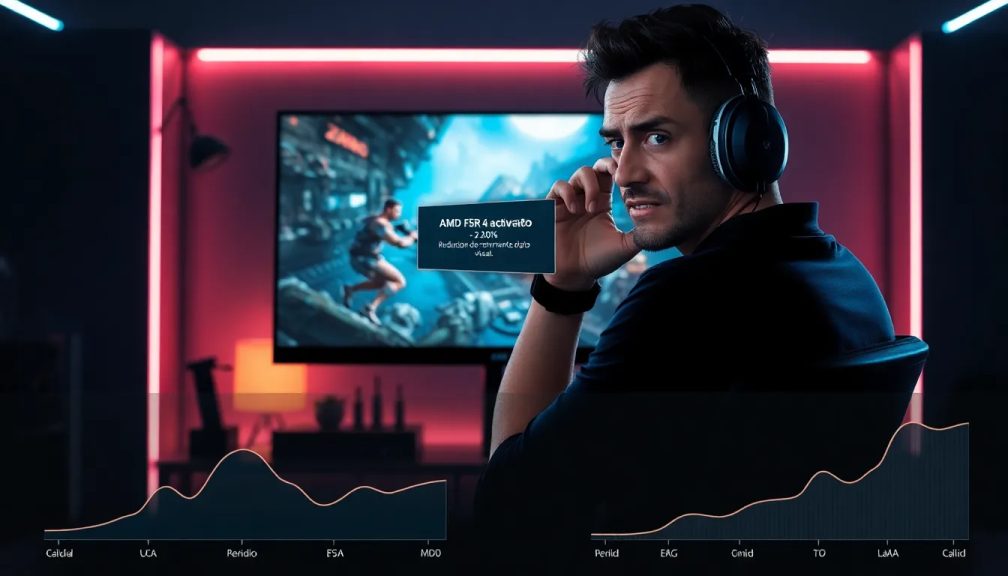AMD FSR 4 on RX 6800 XT reduces performance by 20% for visual quality

The gaming world is constantly evolving, with new technologies emerging to enhance visual fidelity while maintaining performance. AMD's FSR (FidelityFX Super Resolution) 4 is a prime example of this shift, promising improved graphics through advanced upscaling techniques. However, as we delve into its implementation on older architectures like the RX 6800 XT, questions arise regarding performance trade-offs and the practicality of such upgrades.
As gamers eagerly explore the capabilities of FSR 4, it’s crucial to understand not only its benefits but also the potential drawbacks, particularly concerning performance metrics. This article will explore the realities of FSR 4 on the RX 6800 XT, how it impacts gameplay, and what it means for users moving forward.
FSR 4 on RX 6000 Series: Promising but Not for Everyone
While the RX 6000 series has shown promise in adopting FSR 4, particularly the RX 6800 XT, it's essential to recognize that this integration comes with caveats. Early reports indicate that while users can achieve high frame rates, there’s a notable performance drop that needs to be factored in.
A recent user experience with the game Stellar Blade illustrates this point effectively. The user successfully ran the game with FSR 4 enabled, utilizing custom DLLs for optimization. This method allowed them to enjoy enhanced visuals while achieving frame rates that exceeded 100 FPS.
However, it's critical to note that this setup is not standard and involves tweaks that may not be accessible or advisable for all users. The trade-off between visual quality and performance loss is significant, leading many to question whether the benefits truly outweigh the costs.
Understanding AMD FSR 4: The Technology Behind the Performance
AMD's FSR 4 is an advanced upscaling technology that uses machine learning to improve image quality without heavily taxing the GPU. It operates primarily on two principles: FP8 Tensor Math for RDNA 4 architectures and a more accessible INT8 and OptiScaler for older models, including the RX 6000 series.
- FP8 Tensor Math: This approach utilizes smaller data types to enhance performance and visual fidelity.
- INT8 and OptiScaler: These methods allow older hardware to leverage some FSR 4 capabilities, albeit with performance trade-offs.
Users of the RX 6800 XT have reported mixed results, with some experiencing up to a 20% reduction in performance when enabling FSR 4. This decline must be contextualized within the overall gaming experience, particularly for those prioritizing high frame rates.
Performance Trade-Offs: How Much Does FSR 4 Cost You?
While the enhancements in visual fidelity are appealing, the performance costs associated with FSR 4 cannot be ignored. Users have noted that while FSR 3 allows for frame rates exceeding 110 FPS in Stellar Blade, the introduction of FSR 4 sees those numbers dip to between 100 and 107 FPS.
This 10% to 20% drop in performance raises important questions:
- Is the visual enhancement significant enough to justify the loss in frame rates?
- How does this impact competitive gaming where every frame counts?
- Will casual players notice these differences, or is it primarily a concern for enthusiasts?
The implications of these performance trade-offs extend beyond individual preferences. As AMD continues to develop its technologies, the choices made in balancing performance and visual quality will shape the future of gaming hardware.
Implications for Future Gaming Hardware and Consoles
The introduction of FSR 4 raises questions about its future applications, particularly concerning consoles such as the PS5. Sony is reportedly collaborating with AMD on a version of FSR 4 for the PS5 Pro, known as PSSR 2. This partnership suggests a commitment to incorporating advanced upscaling technologies across platforms.
However, the inherent limitations of console hardware must be considered:
- Consoles typically have less processing power than high-end PCs, which may exacerbate performance drops.
- Users may have less flexibility in tweaking settings compared to PC gamers.
- The trade-off between performance and visual fidelity may be more pronounced on consoles.
As the gaming landscape continues to evolve, manufacturers will need to assess whether the benefits of implementing FSR 4 and similar technologies justify the potential downsides for users.
Concluding Thoughts: Is FSR 4 Worth It for RX 6800 XT Users?
The rollout of FSR 4 on older architectures like the RX 6800 XT showcases AMD's commitment to maximizing the potential of its hardware. However, as illustrated by user experiences, the accompanying performance trade-offs must be carefully considered. As gamers weigh the benefits of enhanced graphical fidelity against potential drops in frame rates, it becomes clear that the decision to adopt FSR 4 will depend largely on individual gaming preferences.
For those curious about the dynamic between FSR 4 and performance, a deeper dive into user experiences can provide valuable insight. For instance, check out this video discussing the practical implications of FSR 4:
Ultimately, the decision to enable FSR 4 on the RX 6800 XT boils down to personal preference. For those willing to sacrifice some performance for improved visuals, AMD’s latest technology could be a worthwhile endeavor.




Leave a Reply